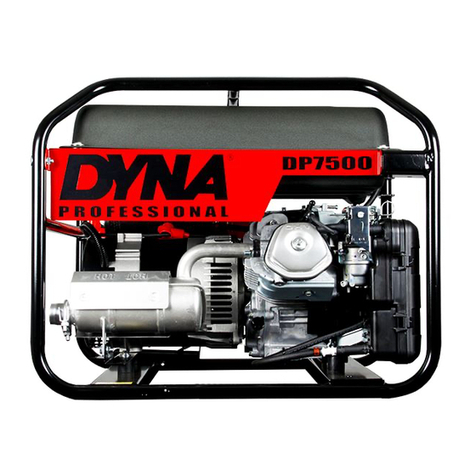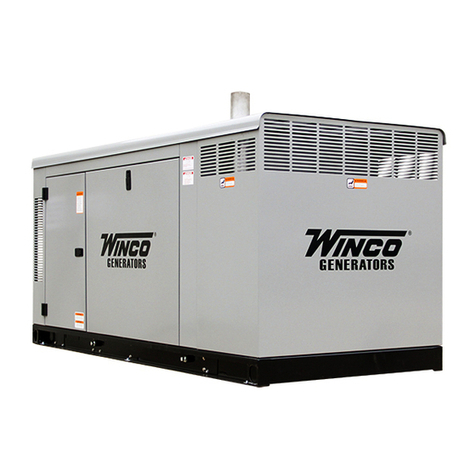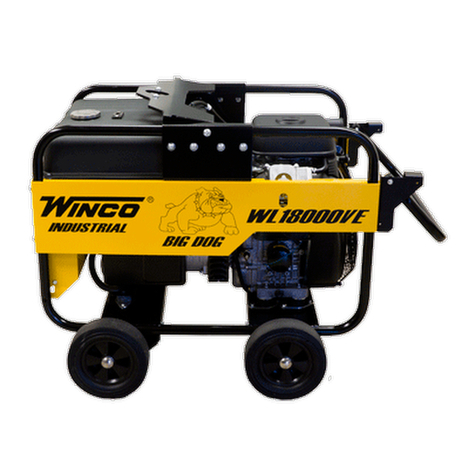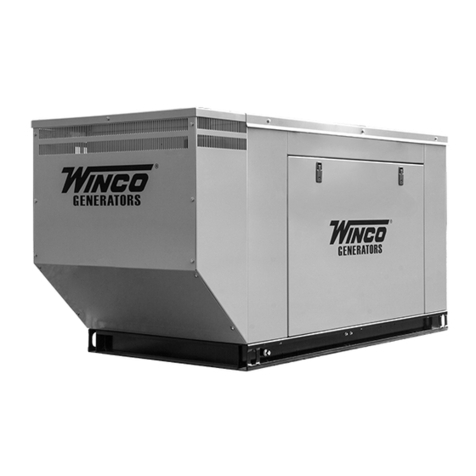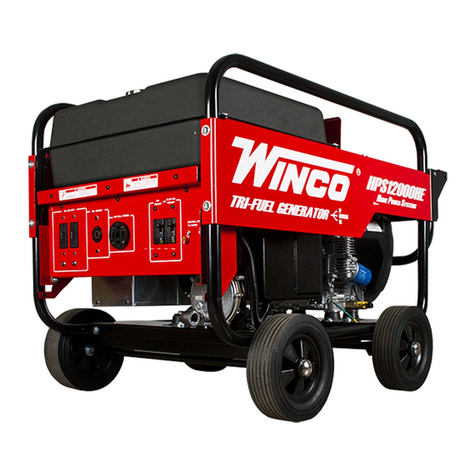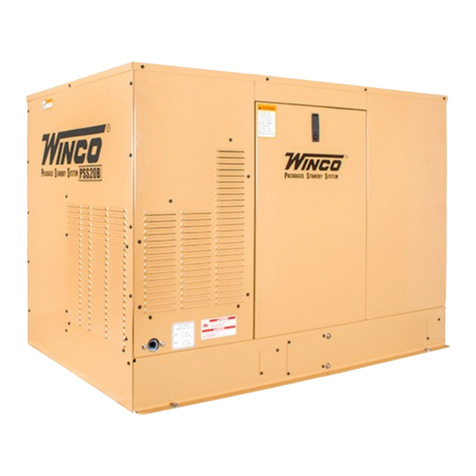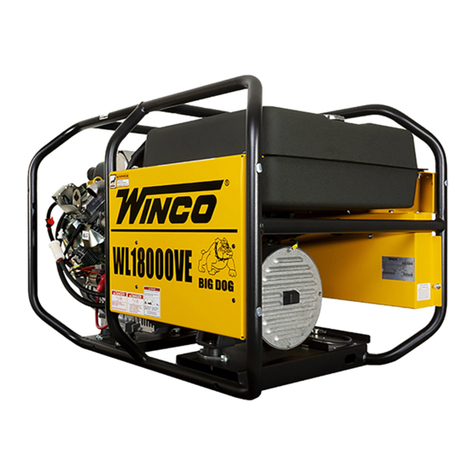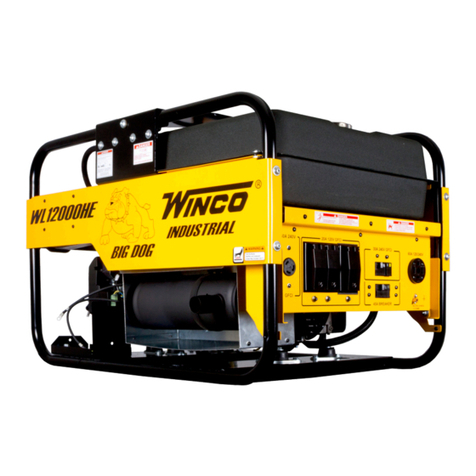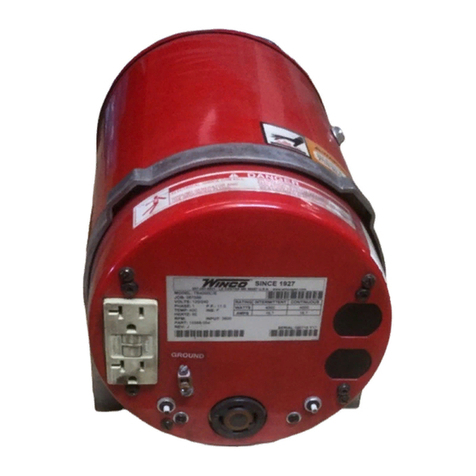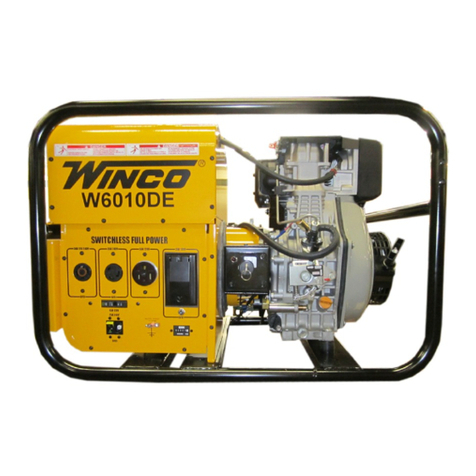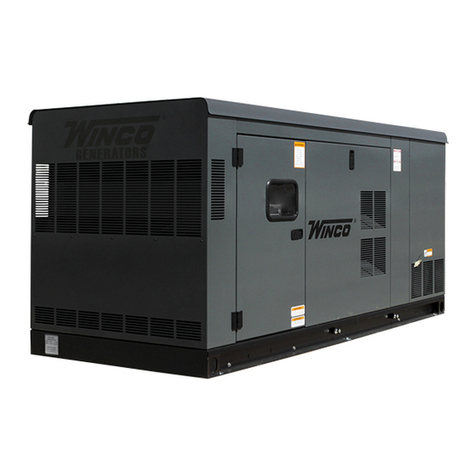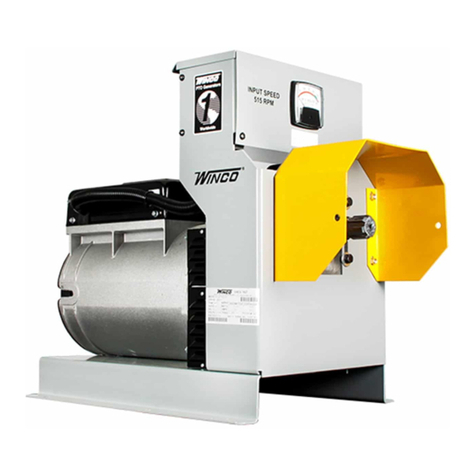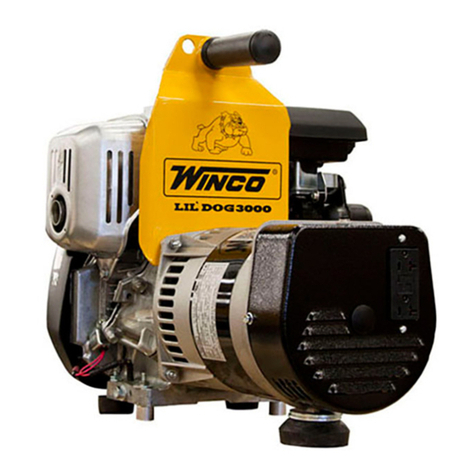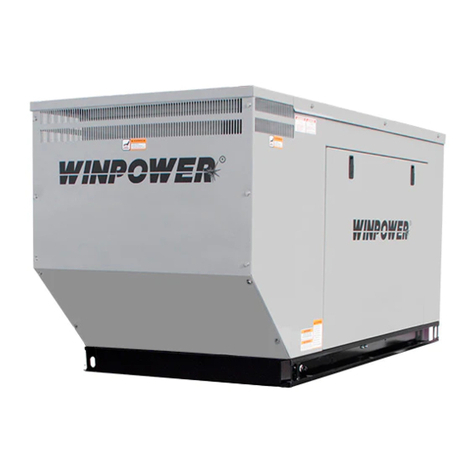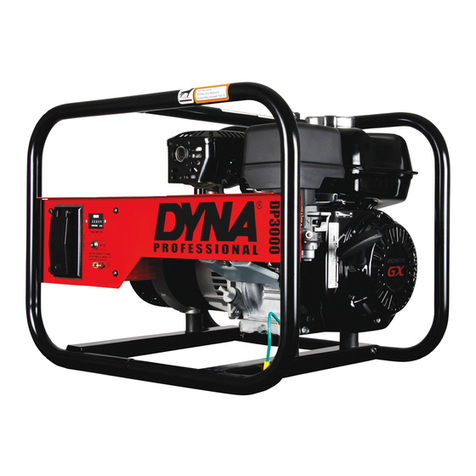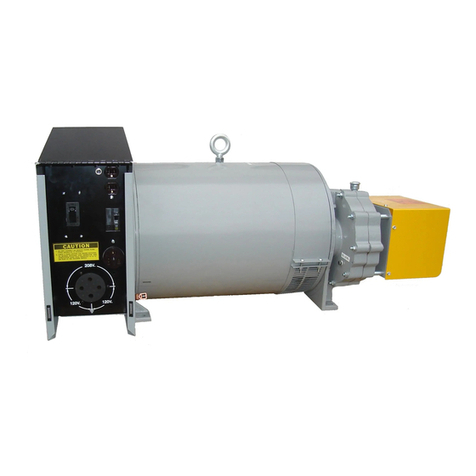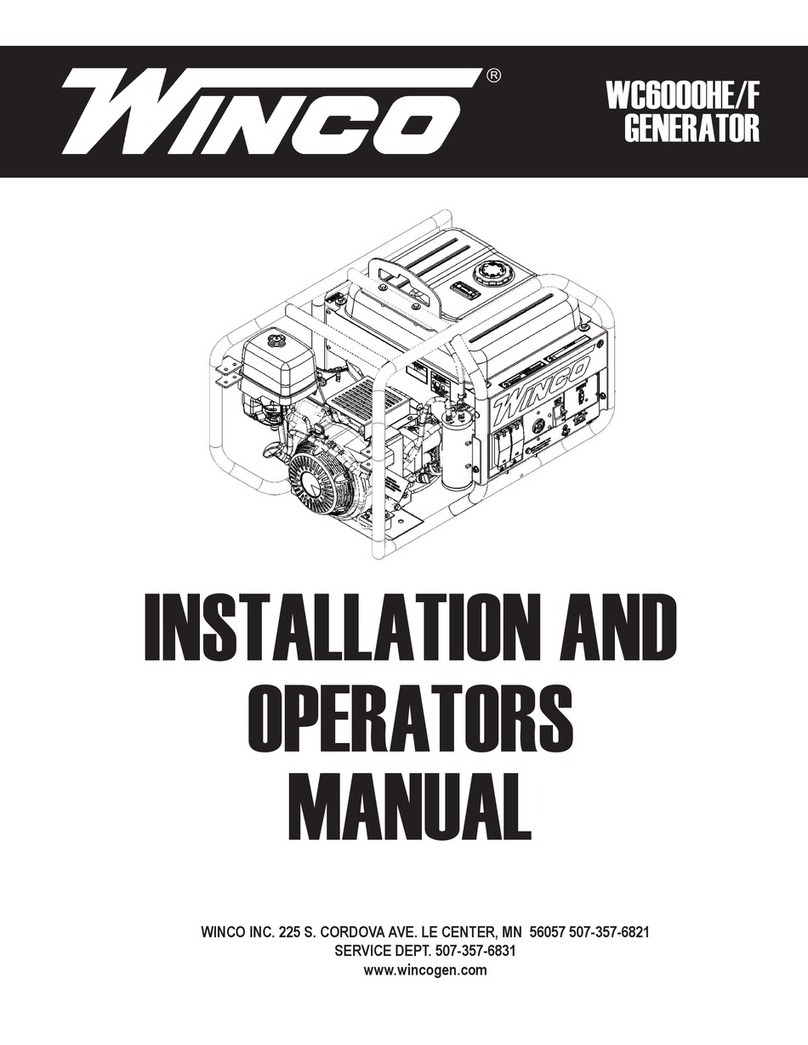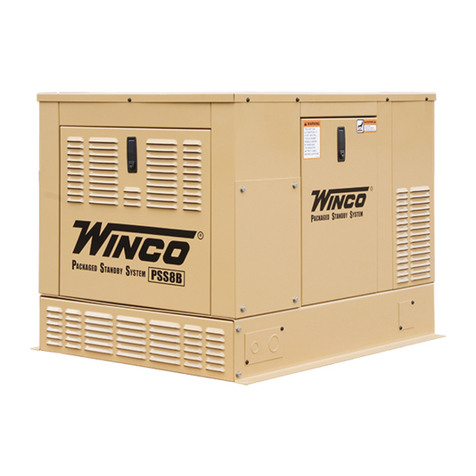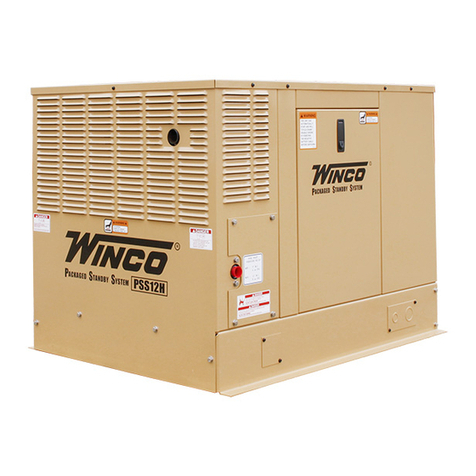
9REV A OPM-110
CONNECTING THE LOADS
The engine-generator covered in this manual was designed for portable
use. Do NOT operate indoors. The unit should be stored in a warm, dry
location. Move the unit outdoors to a at, dry location for use.
WARNING: PERSONAL DANGER:
Operating any engine driven generator without proper air ow can
result in personal injury or death. DO NOT operate this unit inside a
home or garage, near vents or windows, or anywhere carbon monoxide
gas could accumulate.
APPLYING THE LOADS
Allow the engine to warm up for two or three minutes before applying
any load. This will allow the engine to reach normal operating
temperature and oil to circulate throughout the engine. A short warm-
up time will permit the engine to work more efciently when the load is
applied and will reduce the wear in the engine, extending its life.
Receptacles have been provided to allow loads to be connected to the
generator. The loads should be added one at a time. If a large motor
is being started: or multiple motors are being started, they should be
started individually and the largest should be started rst.
CAUTION: EQUIPMENT OVERLOAD
Keep the generator load within in the generator and receptacle
nameplate rating. Overloading may cause damage to the generator
and/or the loads.
Most electric tools and appliances will have the voltage and amperage
requirements on their individual nameplates. When in doubt, consult
the manufacturer or a local electrician. The nameplate amperage rating
for electric motors can be misleading. See “Starting Electric Motors” in
the Unit Capabilities.
These engine-generator sets are inherently self regulating based on
engine speed. The engine governor will automatically adjust itself to
the load. No harm to the generator will result if it is operated with no
load connected. Proper utilization of the receptacles located on the
control panel is necessary to prevent damage to either the receptacles
or the generator. The generator is a limited source of electrical power.
Therefore, pay special attention to the receptacle and generator
ratings. The nameplate rating can be obtained through a single
receptacle as long as the receptacles amperage rating is not exceeded.
GROUNDING
Proper grounding of your generator is application dependent. Carefully
evaluate your planned use of your generator to understand which
grounding you require. If you are not sure what to do, contact a
competent professional to assist you. The NFPA 70 250:34-35 are good
technical references.
STANDARD PORTABLE GENERATOR
Your WINCO portable generator ships with a bonded neutral. You can
safely use this generator without external grounding as long as all
loads are powered through the receptacle panel.
VEHICLE-MOUNTED GENERATOR
Your WINCO portable generator ships with a bonded neutral. When
mounted to a vehicle to safely distribute power it is necessary that
the generator frame is bonded to the vehicle frame. The generator
should only supply equipment that is cord and plug connected through
receptacles mounted on the generator or the vehicle.
PERMANENTLY INSTALLED GENERATORS
This WINCO portable generator ships with a bonded neutral and
overcurrent protection. NFPA 70 refers to this as a “separately derived
system.” When connecting it to a building a transfer switch specically
designed for GFCI and bonded neutral generators is required.
WIRING
Plug your tools such as drills, saws, blowers, sump pump, and
other items to be powered directly into the generator receptacles.
Before plugging in all the tools and cord sets, recheck the rating
of the generator set. Be sure it can handle the intended load and
is compatible with the voltage, phase, and current ratings. ‘Hard
wiring’ this unit directly into a temporary construction site electrical
system is NOT A SIMPLE DO-IT-YOURSELF JOB. For your safety,
all wiring must be done by a qualied electrician and conform to the
National Electric Code and comply with all state and local codes and
regulations. Check with local authorities before proceeding.
WARNING: PERSONAL DANGER
A fully isolated, double pole double throw manual transfer switch must
be installed any time a generator is being connected to an existing
distribution system.
1. These engine-generator sets are designed for portable heavy duty
commercial use. Receptacles are provided on the control panel to
permit 120 and 240 Volt portable appliances and tools to be plugged
directly into them. Please note that the 3-wire 240 Volt receptacle(s) on
these units are designed to power only 240 Volt tools. There are two
hot leads and a ground wire, but no neutral connection, in the 3-wire
240Volt receptacle. A 4-wire receptacle (two hot, one ground, and one
neutral) has been provided on the control panel for use in temporary
power applications requiring 120/240 Volt power. Consult a licensed
electrician for wiring the TemPower plug and connecting it as temporary
service.

